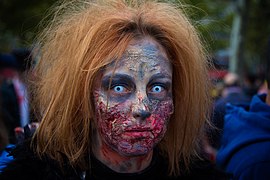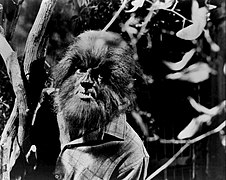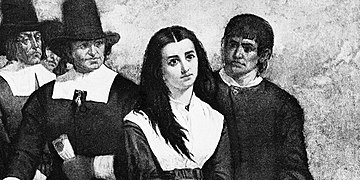Five Classic Halloween Monster Origins
October 26, 2021
It’s that time of year again, and one of the most common seasonal rituals is gathering all of your friends and watching the newest horror movie that was banned in seven countries–but it’s ok, because you didn’t want to go to bed anyway. While you may know the outcome of horror movies on your psyche, you probably don’t know the true origins of your favorite monsters.

1. Zombies
Zombies gained the most traction after George Romero’s Night of the Living Dead in 1968. The origins are darker than Hollywood’s horror scene in the 1960s. During the slave trade in the 17th-century, West African slaves in Haiti longed for freedom and believed the only way they could go home was through death. What stopped them from killing themselves was their fear that they would be punished by a voodoo deity and become trapped in their bodies forever as zombies, slaves to bokor necromancy. Despite its roots, the zombie genre has developed entirely differently and has become the pop-culture phenomenon it is today.

(Credit: Screenshot from “Internet Archive” of the trailer for Dracula (1931) (https://commons.wikimedia.org/wiki/File:Dracula_(1931)_trailer_-_%27I_am_Dracula%27.png))
2. Vampires
Beautiful, ethereal, glimmering super humans have dominated our screens since the early 2000s, with Edward Cullen being one of the most prominent. The origin of vampire stories mainly came from diseases (especially during darker, plague-ridden times in medieval Europe) like porphyria (makes one sensitive to light), pellagra (makes the skin look thin), and rabies (aggressive behavior including biting, and possibly sensitivity to light and garlic). Throughout Europe, unearthing suspected vampire bodies became a practice, and normal signs of decomposition like longer nails, hair, and receding gums were seen as signs of vampirism. Vampire fear peaked in Europe during the 16th and 19th centuries and many characteristics of the modern vampire were derived from gothic literature from these times, especially in Bram Stoker’s Dracula. Vampires didn’t become romantic figures until the late 20th century, especially like Anne Rice’s Interview with the Vampire being a notable example.

3. Werewolves
Lycanthropy still holds a place in modern pop culture from it’s first cinematic entrance in The Wolf Man, 1941. The origins of werewolves still remain unclear. Some believe it started in The Epic of Gilgamesh with the mention of a woman who turned her ex into a wolf. Most early claims of werewolves were of French serial killers starting in the 16th century. Through the serial killer’s claims of being able to turn into wolves, people perceived them as werewolves. Some stories say that werewolves turn at will due to a curse while others say they change due to magical objects. There was still a belief that you could be turned from a bite or scratch and that they only came out during a full moon. Similar to vampires, medical conditions were also seen as proof of lycanthropy, such as rabies and hypertrichosis (rare but causes excessive hair growth).

4. Mummies
Infamous stories of the mummy’s curse first originated in Egypt during French colonization. During this time, people, specifically archaeologists, began to mess with stuff they probably shouldn’t have. All those associated with the excavation of the pyramids, and the remains of ancient pharaohs met an untimely demise. This event sprung mummies into the horror genre when all previous mummy content was generally romantic, with the mummy being female and the love interest for protagonists. The 1932 movie The Mummy, starring Boris Karloff, solidified mummies as a force to be reckoned with within the horror genre. In the late 20th century, mummies took a turn back to romance, with books like Anne Rice’s The Mummy, or Ramses the Damned, which tells the story of a revived mummy who seduces a female archaeologist.

5. Witches
Witches have been the go-to costume for many every Halloween, but these satanic mistresses have faced extreme persecution over time. Early on, many natural healers were mistaken as witches due to their “unnatural” knowledge of plants and herbs and how to use them. Similar to werewolves, the origins are unclear, but an earlier use of witches was in the Bible, where a king went to a witch to revive a dead prophet. Halfway through the 15th century witch-mania spread through Europe. During this time, witch hunts occur where many heinous crimes were committed, mainly against “women in league with Satan.” According to The History Channel staff, “Between the years 1500 and 1660, up to 80,000 suspected witches were put to death in Europe. Around 80 percent of them were women thought to be in cahoots with the Devil and filled with lust.”
A guide on how to identify, track, and hunt witches called the Malleus Maleficarum, was written and it increased the mania significantly. This is seen especially with the book calling witchcraft heresy, allowing the church to see witches as a direct threat and enemy. Of course, the most infamous witch trials occurred in Salem, Massachusetts circa 1692. The hysteria started over two sick girls. In the end, over 150 people were accused and 18 of those killed, solely in Salem.
With the chilling origins of some of these Halloween classics, it might be a better idea to keep indoors this Halloween. So, read an Anne Rice book, buy a family sized bag of candy, or carve a pumpkin. Whatever you do, don’t go outside. Who knows what weird hairy Frenchmen could be lurking in the shadows?









